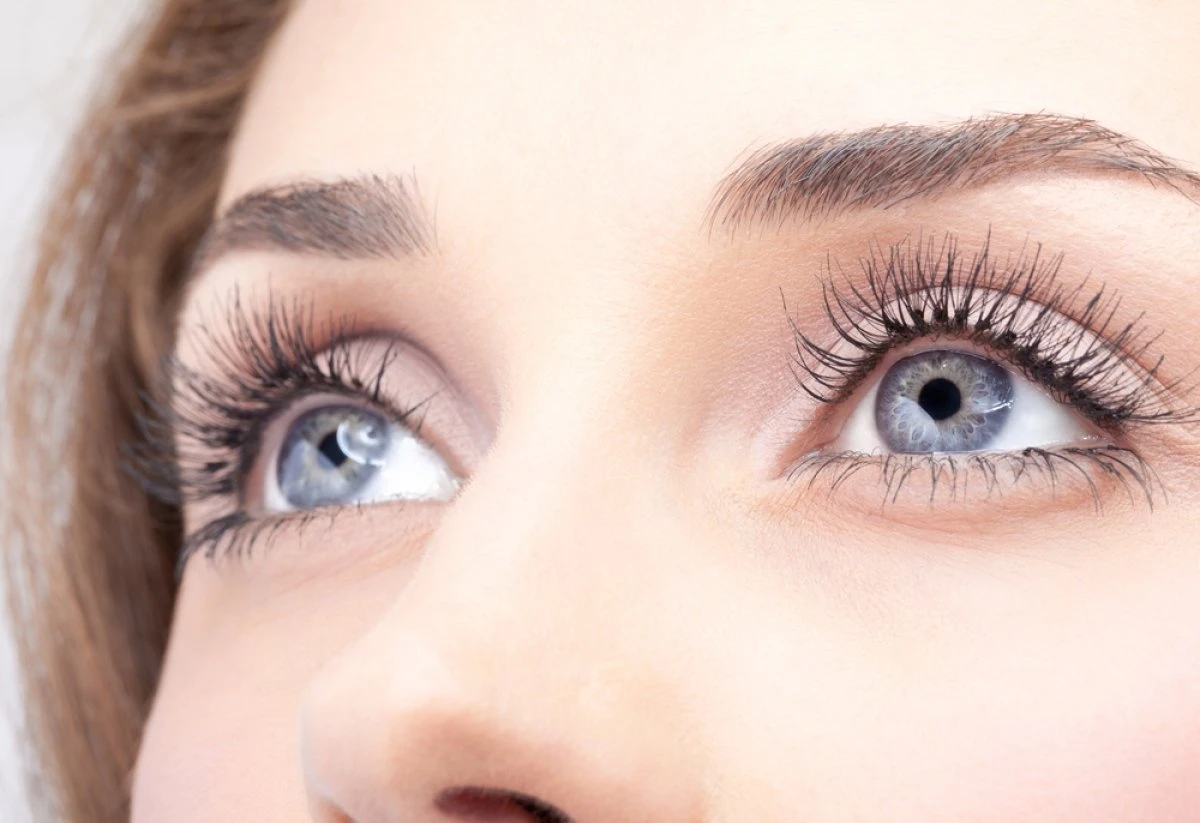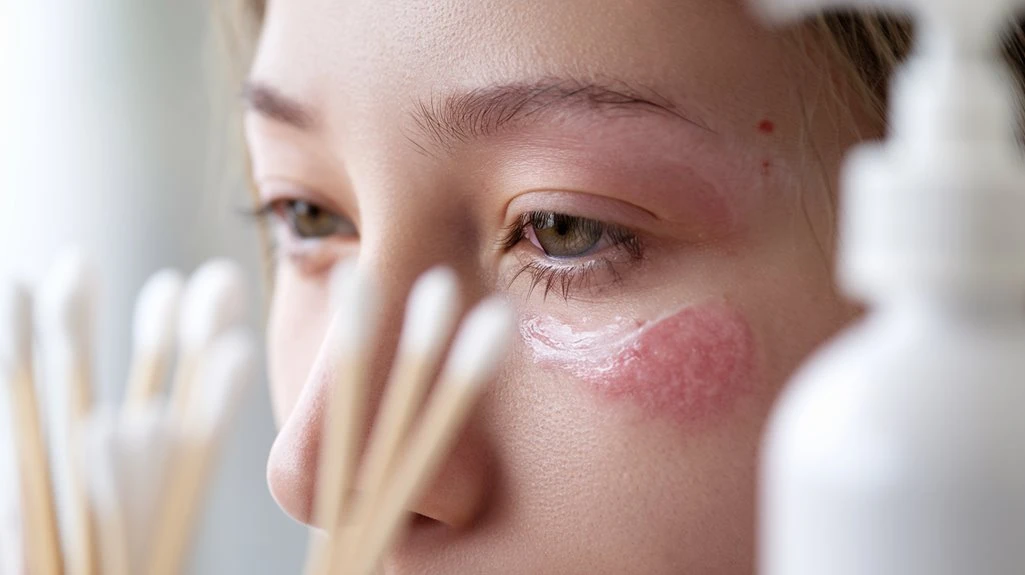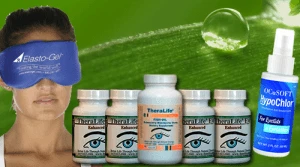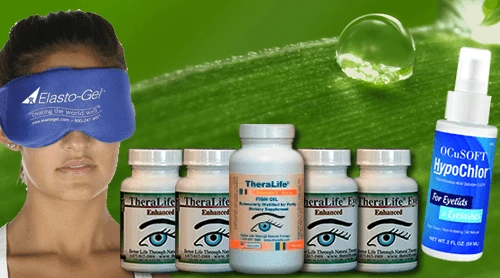Theralife’s products offer significant benefits for those dealing with eyelid inflammation, or blepharitis, by addressing the root causes such as bacteria, immune responses, and skin disorders. Their comprehensive range includes natural treatments and supplements designed to enhance eye health, minimize redness, swelling, and crusting, and improve lid hygiene. Theralife emphasizes the importance of consistent preventive habits, recommending daily eyelid cleansing and avoiding environmental triggers. Their solutions, which include natural remedies and dietary adjustments, provide targeted relief and help maintain optimal eye health. For personalized guidance on managing blepharitis and other eye conditions, explore Theralife’s offerings at [theralife.com](https://www.theralife.com/).
Best Eyelid Inflammation /Blepharitis Treatment From TheraLife- When Drops Don’t Work.
Key Takeaways
- Eyelid inflammation can result from bacterial infections, abnormal immune responses, or skin conditions like seborrheic dermatitis.
- Poor eyelid hygiene allows bacteria and debris to accumulate, increasing inflammation risk.
- Consistent daily eyelid cleansing helps prevent both bacterial and non-bacterial causes of inflammation.
- Avoiding irritants, replacing cosmetics regularly, and not sharing eye products reduce contamination and recurrence.
- Dietary improvements and stress management can help lower overall inflammatory responses and prevent flare-ups.
Understanding the Link Between Bacteria and Eyelid Inflammation
Although eyelid inflammation, or blepharitis, can arise from several factors, current evidence indicates that bacteria aren’t always the primary cause. You might assume a bacterial infection is responsible, but research shows that blepharitis often involves complex interactions between your ocular surface, skin flora, and immune response.
Staphylococcal species may contribute to inflammation, yet some cases occur without significant bacterial colonization. Inappropriate or frequent antibiotic use can even promote bacterial resistance, complicating management strategies.
Instead, abnormal immune response or underlying dermatological conditions such as seborrheic dermatitis frequently precipitate inflammation. Consequently, while bacterial activity can play a role, it’s essential to recognize non-bacterial origins.
Understanding this allows you to evaluate targeted treatments rather than relying solely on antibiotics, reducing the risk of resistance and optimizing clinical outcomes. Meibomian gland dysfunction is a primary cause of blepharitis, leading to inflammation due to the disruption of normal tear film and lipid layer balance.
Common Symptoms and Signs of Bacterial Blepharitis
When bacteria play a significant role in eyelid inflammation, you’ll often notice symptoms that distinguish bacterial blepharitis from other types. You may experience itching, burning, and persistent redness along the eyelid margins. A hallmark is the presence of crusting or sticky debris at the lash line, especially upon waking. Swelling, irritation, and a foreign body sensation are common, and the eyes may appear watery or demonstrate mild mucous discharge. Unlike allergy triggers or purely environmental factors, bacterial blepharitis tends to produce more pronounced scaling and focal redness. In some cases, blocked glands can lead to additional complications, as they impede normal oil secretion and exacerbate symptoms.
| Symptom | Bacterial Blepharitis | Allergy/Environmental Factors |
|---|---|---|
| Lid Crusting | Prominent | Rare |
| Mucous Discharge | Frequently Observed | Uncommon |
| Persistent Redness | Common | Intermittent |
| Foreign Body Sensation | Strongly Experienced | Possible |
| Eyelid Swelling | Moderate to Severe | Mild |
Daily Hygiene Practices to Minimize Bacterial Growth
Consistent eyelid hygiene directly limits bacterial proliferation and reduces the risk of recurrent blepharitis. You should cleanse your eyelids daily with a sterile, preservative-free eyecare solution or diluted baby shampoo to remove biofilm and debris from the lid margins. Use a clean, lint-free cloth or a commercial eyelid wipe, gently scrubbing the eyelashes and adjacent skin. This practice disrupts bacterial colonization and addresses the microenvironment that fosters inflammation. Avoid touching or rubbing your eyes with unwashed hands, as this facilitates pathogen introduction. Replace cosmetics regularly and abstain from sharing eye products to minimize cross-contamination risks. Daily eyelid hygiene practices, such as these, are crucial for maintaining ocular health and preventing conditions like blepharitis. Adhering to these eyelid hygiene protocols demonstrates efficacy in bacterial prevention, as supported by multiple clinical studies. Prioritizing daily hygiene reduces inflammatory triggers and supports peak eyelid health.
Effective Treatment Strategies for Bacterial Eyelid Infections
Successful management of bacterial eyelid infections requires a targeted approach combining antimicrobial therapy with supportive care. You should seek prompt evaluation to confirm the diagnosis and identify causative organisms. Topical or oral antibiotic therapies are typically prescribed based on clinical severity and pathogen resistance patterns. Adherence to the recommended antibiotic regimen is essential to reduce bacterial load and prevent complications.
Supportive interventions, such as applying warm compresses, enhance the effectiveness of antibiotic therapies. Warm compresses facilitate drainage of purulent material, relieve discomfort, and expedite resolution of inflammation. Avoid manipulating lesions directly, which may exacerbate infection. Regular eyelid hygiene and the use of Bruder masks can help maintain oil gland function and prevent styes.
| Treatment Modality | Clinical Benefit |
|---|---|
| Topical antibiotics | Target localized bacterial overgrowth |
| Oral antibiotics | Address severe or systemic infection |
| Warm compresses | Promote drainage, relieve symptoms |
| Eyelid hygiene | Reduces microbial colonization |
Best Eyelid Inflammation/Blepharitis Treatment From TheraLife- When Drops Don’t Work.
Lifestyle Adjustments to Reduce Recurrence of Inflammation
Although medical treatment addresses acute flare-ups, long-term prevention of eyelid inflammation hinges on specific lifestyle modifications.
To reduce recurrence, you should emphasize meticulous eyelid hygiene—regularly cleansing the eyelid margins with mild solutions to deter debris accumulation and bacterial colonization.
Incorporating dietary changes, such as reducing intake of processed foods and increasing the consumption of omega-3-rich foods, may modulate inflammatory responses based on current clinical data.
Additionally, stress management is critical; chronic stress elevates systemic inflammatory markers, potentially exacerbating eyelid irritation. You can employ techniques like mindfulness or structured relaxation exercises to mitigate stress-induced flare-ups.
Limiting environmental triggers—like smoke or allergens—can further decrease recurrence risk.
Hypochlorous acid solutions are effective against microbial agents and can be incorporated into your eyelid hygiene routine to manage inflammation more effectively.
Best Eyelid Inflammation/Blepharitis Treatment From TheraLife- When Drops Don’t Work.
Frequently Asked Questions
Can Eyelid Inflammation Affect My Vision Long-Term?
If you experience persistent eyelid inflammation symptoms, it’s important to address them promptly.
When left untreated, chronic inflammation—such as in blepharitis or severe meibomian gland dysfunction—can cause long term effects, including conjunctival scarring, keratitis, and even vision impairment from corneal involvement.
However, with proper medical management and adherence to treatment plans, you can minimize the risk of these complications and preserve your ocular surface health and visual function.
Are Certain Foods Linked to Increased Eyelid Inflammation?
It’s interesting—you might notice a flare-up just after eating certain foods.
Evidence suggests that dietary triggers like processed foods, refined sugars, and dairy can coincide with increased eyelid inflammation in some individuals.
You’ll want to prioritize anti-inflammatory foods such as leafy greens, fatty fish, and berries.
Clinical studies indicate these can reduce inflammatory markers.
Always track your symptoms alongside dietary changes to identify specific culprits and optimize your eyelid health.
Is Eyelid Inflammation Contagious to Others?
You don’t typically spread eyelid inflammation to others, since most cases stem from non-contagious causes like allergic reactions or blocked glands.
However, if bacteria or viruses cause your symptoms, transmission can occur. Practicing rigorous eyelid hygiene—through gentle cleansing and avoiding sharing towels—minimizes risk.
Clinically, it’s essential to determine the specific etiology, as contagious forms such as bacterial or viral blepharitis require additional precautions to prevent cross-contamination or outbreaks.
Can Makeup Products Cause Eyelid Inflammation?
Nearly 25% of contact dermatitis cases in dermatology clinics involve the eyelids, with makeup ingredients being frequent culprits.
You can develop eyelid inflammation when you’re exposed to preservatives, fragrances, or pigments in makeup that your skin recognizes as irritants or allergens.
It’s essential to perform allergy testing if you experience symptoms like redness or swelling.
Evidence-based guidance recommends using hypoallergenic products and discontinuing any suspected irritants to prevent recurrence.
Does Stress Play a Role in Eyelid Inflammation Flare-Ups?
Yes, stress can trigger eyelid inflammation flare-ups by disrupting your immune response and increasing inflammatory mediators.
Research indicates that chronic stress impairs barrier function and alters tear film composition, making the eyelids more susceptible to irritation.
Prioritize stress management and improve your emotional wellbeing through techniques such as mindfulness or cognitive behavioral therapy.
Best Eyelid Inflammation/Blepharitis Treatment From TheraLife- When Drops Don’t Work.
Conclusion
TheraLife’s products are designed to benefit customers by effectively addressing eyelid inflammation and related conditions. Neglecting lid hygiene can lead to bacterial blepharitis, causing redness and irritation. TheraLife offers a range of solutions to combat this, ensuring that consistent care and small lifestyle changes can keep such issues at bay.
TheraLife’s product line is crafted from natural ingredients that soothe and reduce inflammation, providing relief for conditions like blepharitis and dry eyes. They emphasize the importance of regular eyelid cleaning and offer supplements that enhance overall eye health. These products are especially beneficial for those who struggle with recurrent eye conditions, as they promote long-term wellness without relying on harsh chemicals or invasive procedures.
For customers, this means a chance to maintain healthy eyes with the power to prevent inflammation literally in their own hands. By integrating TheraLife’s products into their daily routine, individuals can enjoy improved eye comfort and protection against relentless bacterial invaders, ensuring their eyelids can fulfill their protective role effectively.





